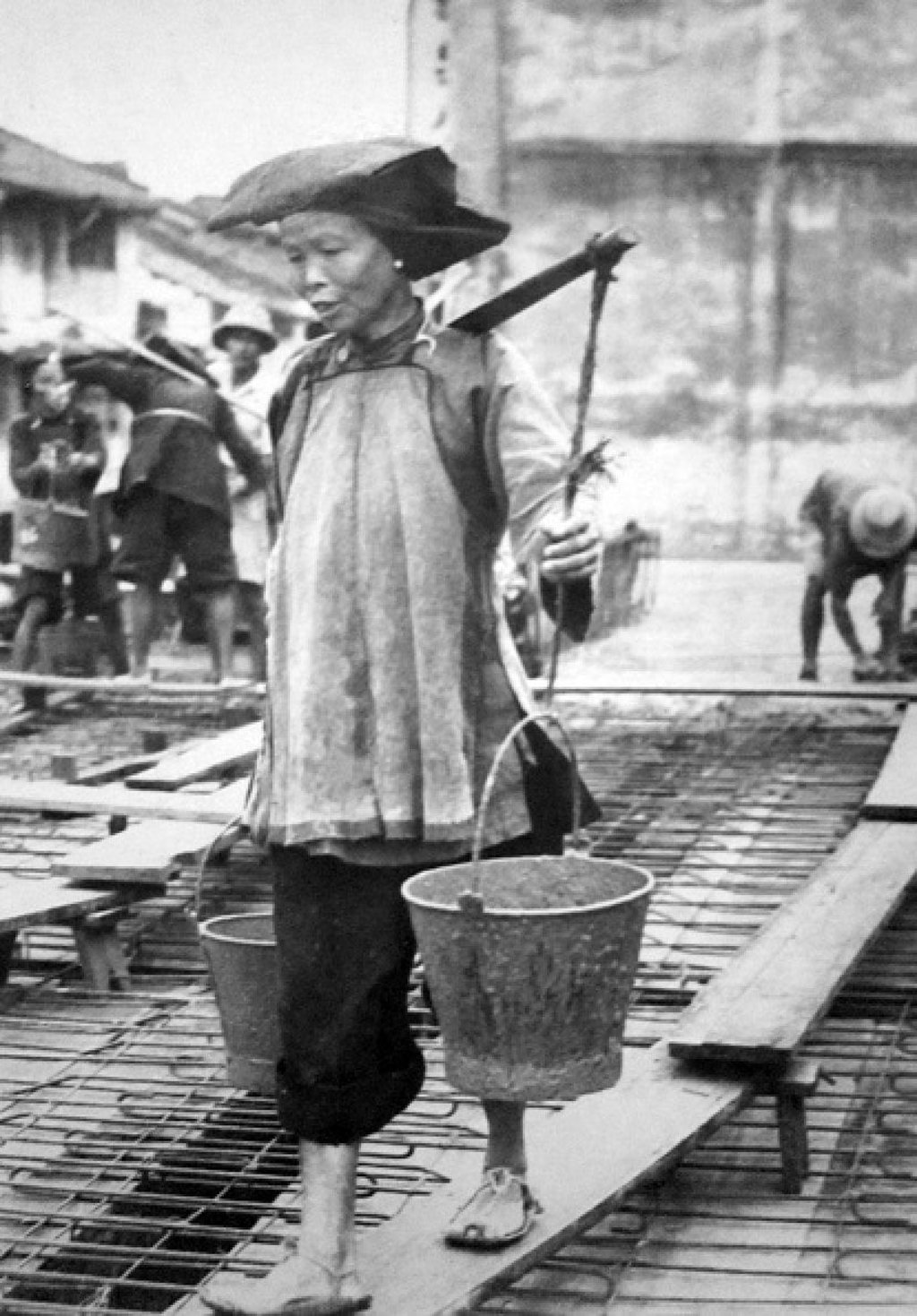A larger-than-life mural of a Samsui woman, cigarette in hand, on the exterior of a Chinatown shophouse in Singapore, has been the subject of public debate the past month.
Discussion has centred more around its alleged normalisation of smoking, and less on Samsui women’s contribution to the modern state.
Samsui women – who originate in the district of Samsui, Cantonese for “three waters”, in the coastal province of Canton, today’s Guangdong – are synonymous with the construction of 1930s Malaya. Their roots are, however, found in the rise of industrialisation in late 19th-century China and modernised sericulture – the cultivation of silkworms and extraction of silk for making fabric – which brought employment in the Pearl River Delta to poor women.
With financial independence, women chose not to get married – avoiding obligations to husbands and in-laws. Instead they joined sworn spinsterhoods of sor hei, a Cantonese term 梳起 meaning “comb up”.
This referred to the practice of combing one’s hair up into a bun, a symbol of married women, rather than wearing their hair in braids, and was an act accompanying the ritual vow marking these women’s joining of the sisterhood.

Some sor hei chose to work overseas, seeking better employment prospects beyond their own poorer regions, with the British colonies of Hong Kong and Malaya popular destinations. The decline of the silk industry in the 1930s prompted thousands more of these women to leave the Pearl River Delta in search of employment overseas.
An agency system entailed the assistance of individuals from one’s own district who were already experienced in travel, known as suay hak (in Cantonese 水客 seoi haak) – a term combining the words for “water, money” and “guest, customer, passenger”, and meaning “trader” – who arranged passage, lodgings, and employment.
The Malayan immigration restrictions enforced during the Great Depression to control the supply of Chinese male labour opened doors for females: some 200,000 women from China migrated to Malaya between 1934 and 1938.
The young women from the district of Samsui, coming from peasant families and used to farm work, were preferred as labourers and washerwomen in Singapore. As general labourers in the construction industry, their duties involved digging soil and carrying earth, debris, and building materials in buckets hung from shoulder poles.
Because they comprised the majority of workers in the construction industry, the term “Samsui women” was used for all women in the industry, even if they came from other regions in China, such as Fujian and Chao’an.

Samsui women donned navy blue or black samfoo – an outfit comprising tunic and trousers. Their trademark headgear comprised a starched piece of cloth folded into a square-shaped hat, usually scarlet. This conspicuous colour reduced the chances of accidents at the construction site, and also earned them another nickname: hóng tóu jīn 紅頭巾, Mandarin for “red headscarf”.
In their new city, these sisterhoods pooled their wages to rent shared rooms, in quarters referred to as coolie fong (Cantonese 估俚房 “coolie houses”).
The word coolie had emerged in the 1600s as the derogatory name Europeans used for hired native labourers employed in menial work in India and China. This is believed to ultimately be an ethnonym, originating in the Gujarati Kōḷī, the name of a tribe or caste in India whose members frequently worked as labourers or performed menial tasks.

The term was adopted by the Portuguese in 16th-century India as cule, for a local hired labourer, and later also in China, perhaps partly influenced by Tamil kūli meaning “hire, payment for occasional menial work”, with some form of the word existing in all south Asian languages. The word coolie was subsequently adopted in English in 1622.
The idea of a Mandarin Chinese source for the word, kǔlì – meaning “bitter strength/ resilience” – is poignant but not feasible, and is a later phonological adaptation of the word. Still, hardship and resilience are the most significant things that come to mind when reflecting on our images of Samsui women and other labourers of the colonial era.

